
Fashion Industry
Cross sell example
In the fast-paced realm of fashion, cross selling takes center stage in boosting sales for store owners. Let’s explore some effective cross selling strategies used by fashion market leaders:
1. “Buy the look”
This strategy offers customers complete outfit suggestions, showcasing how different clothing items, accessories, and shoes can be combined to create a stylish ensemble.
Example: ASOS Product page
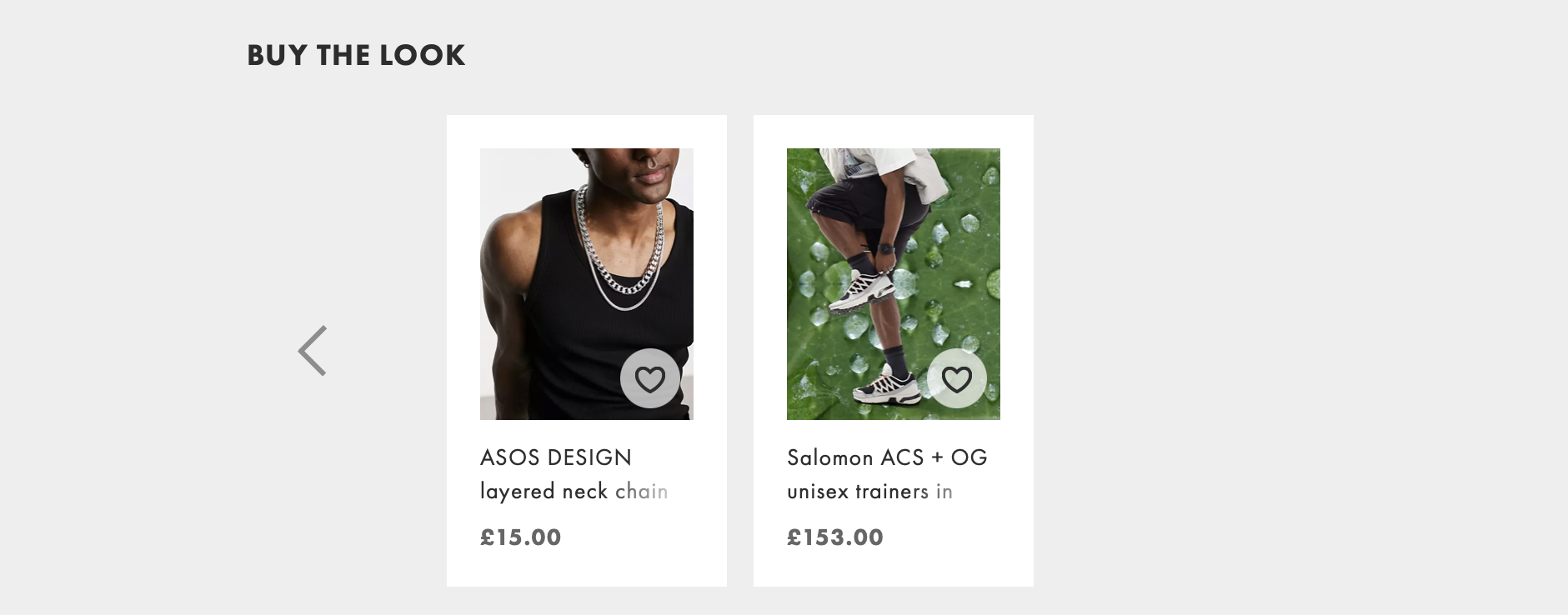
2. “Similar items” or “You might also like”
The “similar items” strategy involves recommending products that share similarities, such as style, color, or design, with the item a customer is currently viewing, helping customers to discover alternative choices that align with their personal style, increasing the likelihood of additional purchases.
Example: ASOS page of oversized tshirt
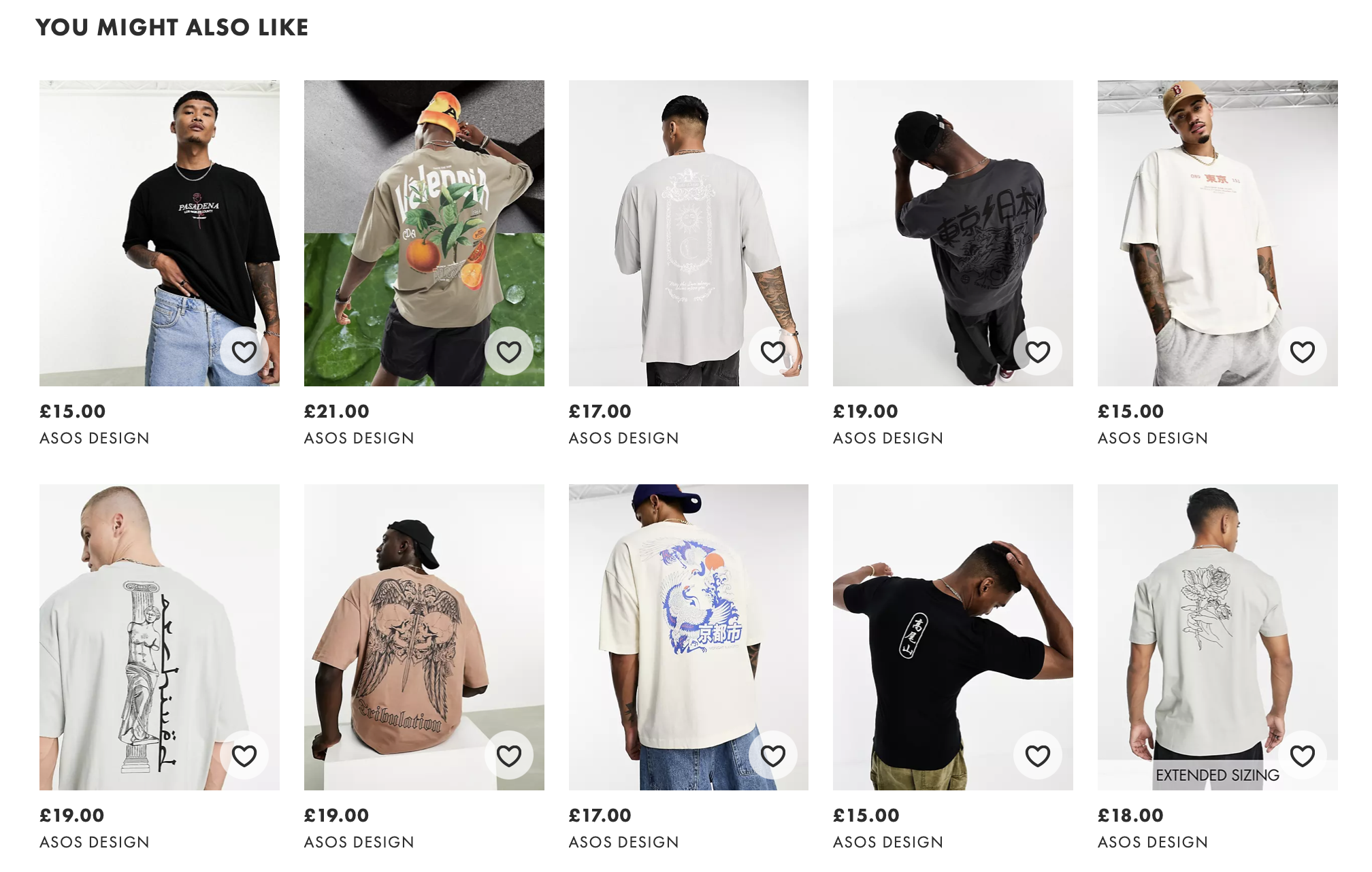
3. “Best ratings”
Leveraging customer reviews and ratings, the “best ratings” strategy builds trust and confidence in the shopping experience. When showcasing top-rated products or customer favorites, this strategy instills a sense of reliability and encourages customers to consider these highly recommended products.
Example: L.A girl product page
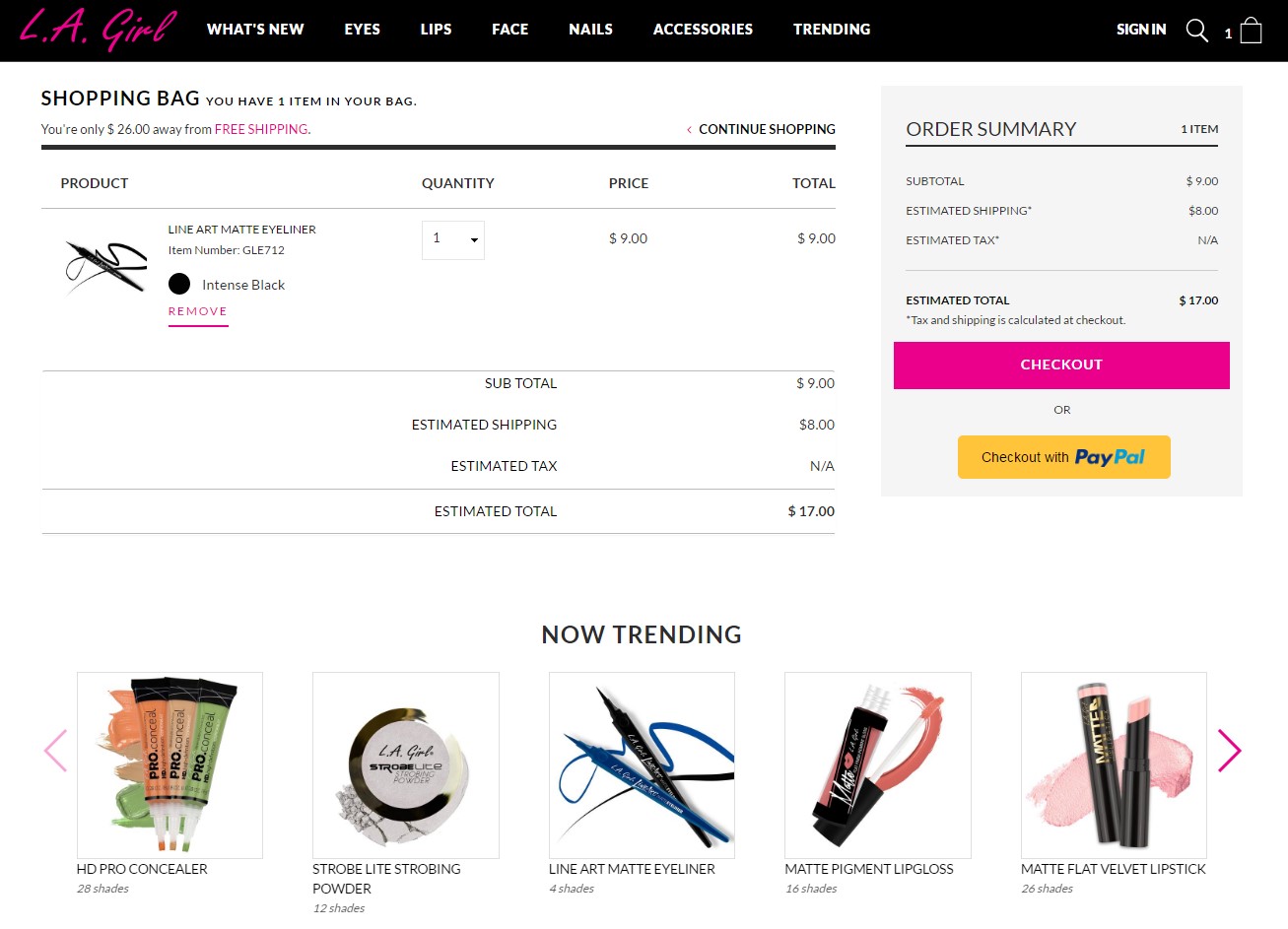
4. “Combine products”
The “combine products” strategy suggests complementary items that can be combined to create a cohesive look. By presenting items like tops with bottoms, accessories with clothing ensembles, or shoes with outfits, fashion retailers help customers visualize and assemble desired looks effortlessly.
Example: H&M product page
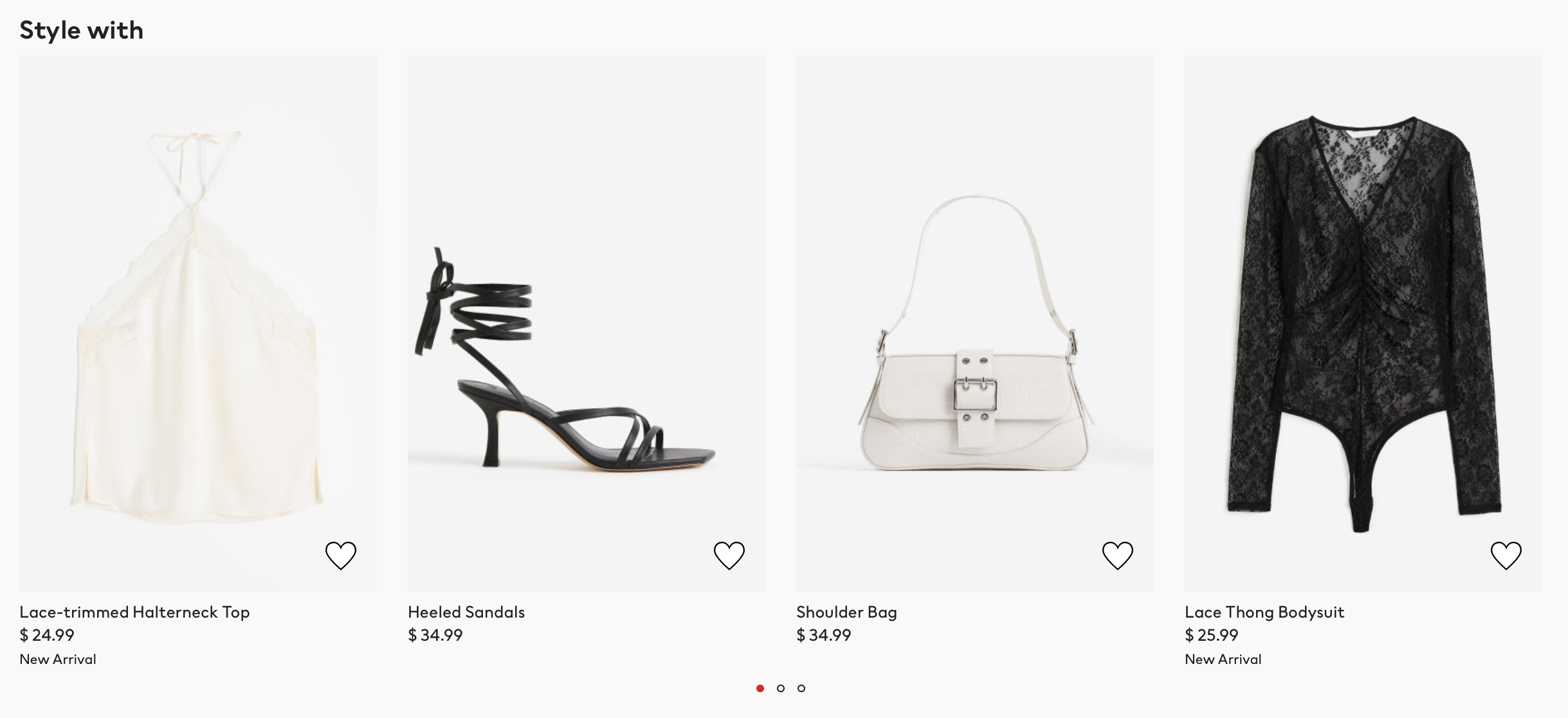
Upsell example
Along with cross selling, upselling is a powerful technique that involves offering customers premium or designer versions of products they are interested in. We have listed some insightful examples below that you can learn and apply for your own business:
1. “New arrivals”
By showcasing the latest trends and fresh arrivals, fashion retailers create a sense of exclusivity and urgency, encouraging customers to consider upgrading their purchases to stay ahead of the fashion curve.
Example: Adidas product page
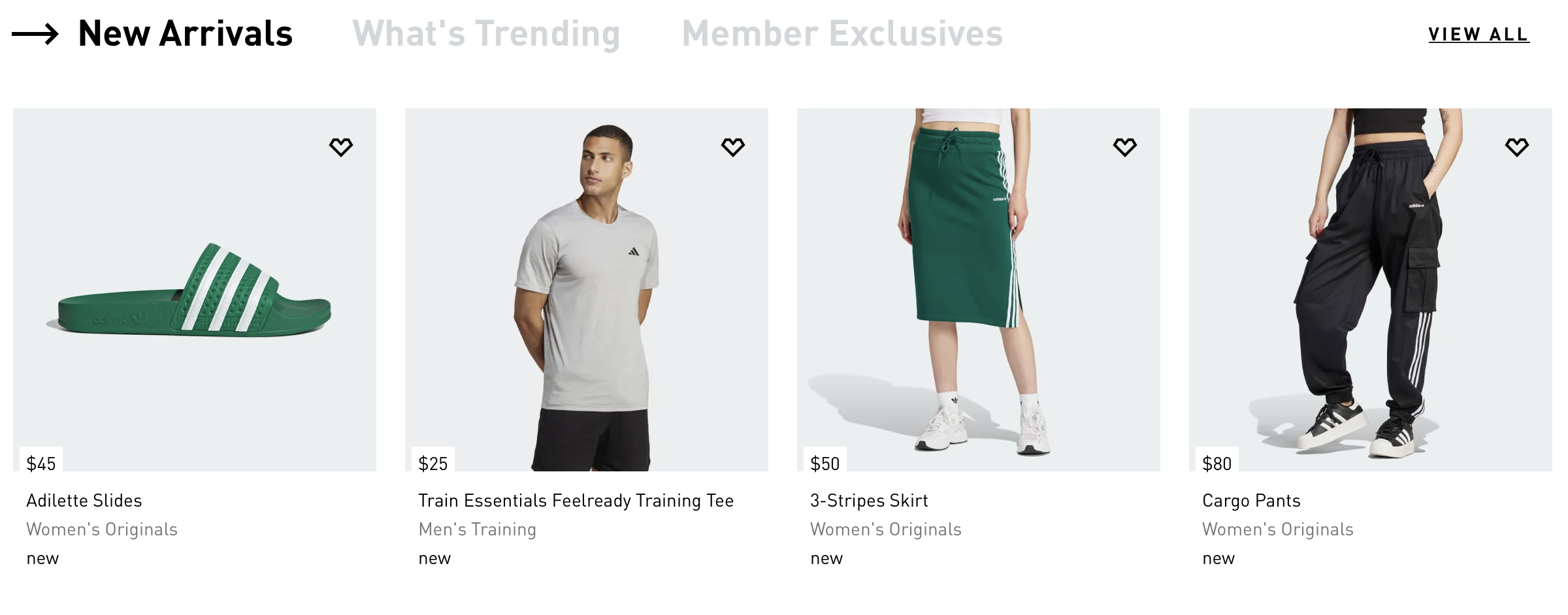
2. “Selected favorites/ Best sellers”
With this strategy, fashion retailers highlight a curated selection of customer favorites or best-selling items in order to leverage social proof and create a sense of trust and confidence in the customer’s decision-making process.
Example: H&M product page
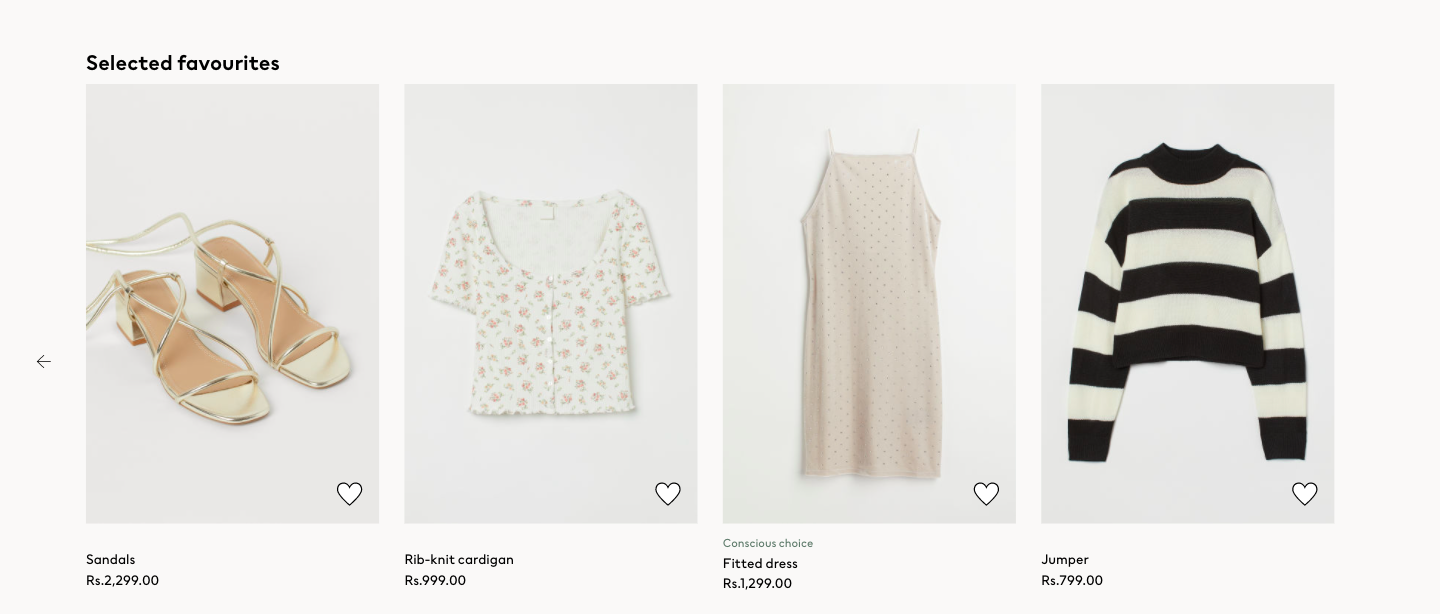
3. “Shop the gram”
Social proof is a crucial factor that influences customer behavior. By using Social Shopper, brands can motivate your customers to shop based on popular trends and effortlessly promote the products to increase sales.
Example: Forever 21 product page
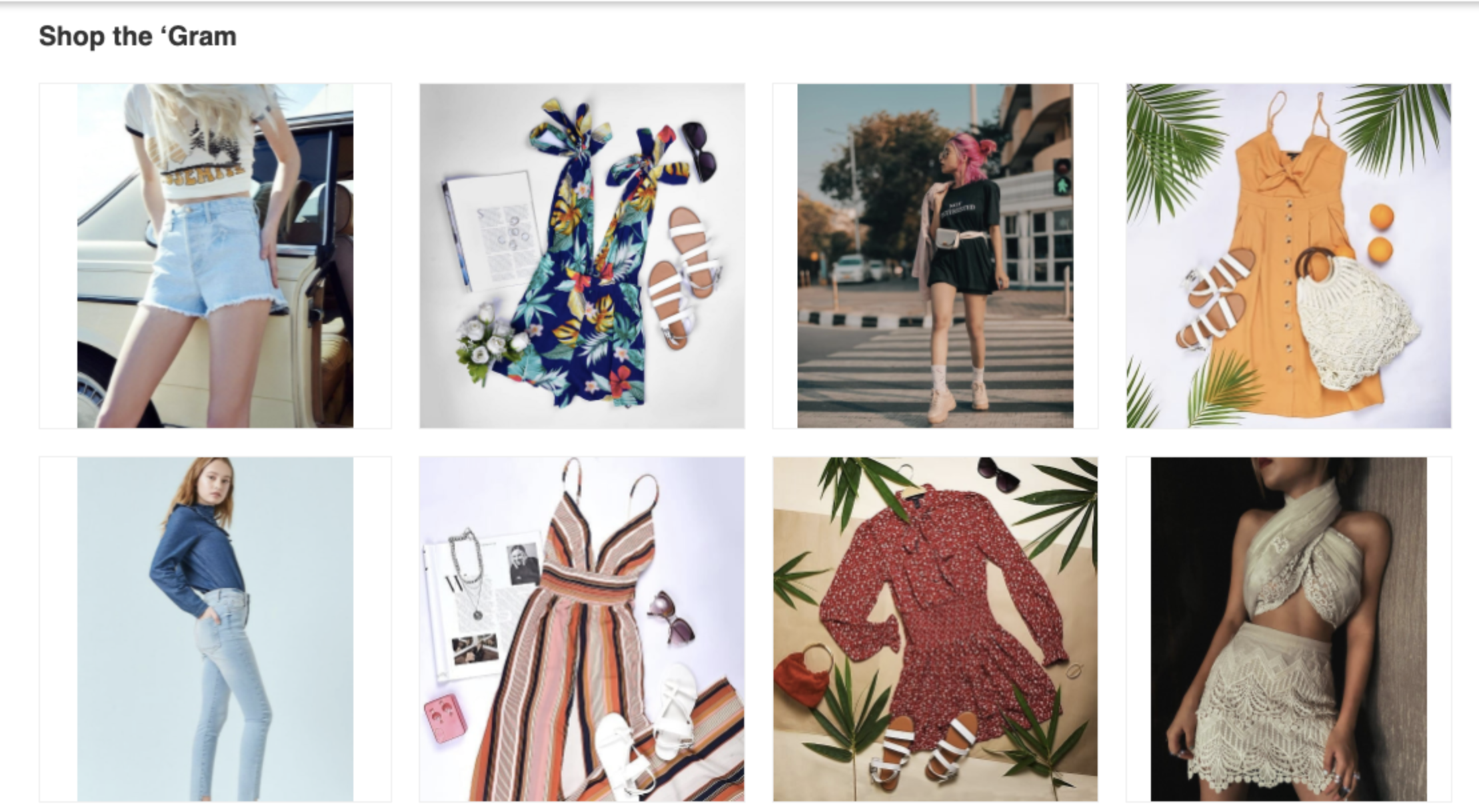
Electronics Industry
Cross sell example
Cross selling involves suggesting complementary accessories, additional gadgets, or related products to customers, providing them with a comprehensive solution and enhancing the functionality of their electronic purchases. For example, if a customer is going to buy a laptop, what could we recommend for them? Check out the lists below!
1. Laptop accessories
This strategy offers customers complete outfit suggestions, showcasing how different clothing items, accessories, and shoes can be combined to create a stylish ensemble.
2. External storage devices
These devices provide extra storage capacity, ensuring that customers have ample space to store their files, documents, photos, and videos.
3. Wireless mouse or keyboard
It allows customers to enjoy a clean and organized workspace while providing enhanced flexibility and ease of use.
4. Additional chargers and cables
Recommending extra chargers, USB-C cables, or HDMI cables ensures that customers can conveniently charge their laptops or connect them to external displays.
5. External monitors or projectors
These devices make it easier for customers to multitask, enjoy media content, or deliver impactful presentations.
6. Software or subscriptions
This can include antivirus software, creative applications, or media streaming subscriptions, providing customers with a comprehensive solution for their laptop needs.
Upsell example
1. Advanced camera system
Emphasize the ability to capture stunning photos and videos by using advanced camera systems, such as multiple lenses and higher megapixel counts, enabling customers to express their creativity and preserve memories in exceptional quality.
2. Increased storage capacity
Showcase smartphones with larger storage capacities, enabling customers to store more apps, photos, videos, and documents without worrying about running out of space.
3. Enhanced display technology
These technologies, such as OLED or AMOLED screens provide vibrant colors, deep blacks, and high contrast ratios, delivering a visually stunning viewing experience for multimedia consumption, gaming, and productivity.
4. Longer battery life
Smartphones with extended battery life could enable customers to stay connected, entertained, and productive throughout the day without the need for frequent recharging.
5. Faster processor and RAM
Faster processors and increased RAM, delivering smooth and responsive performance are useful for the purpose of multitasking, gaming, and demanding applications.
6. 5G connectivity
Introduce smartphones with 5G connectivity capabilities, enabling customers to experience lightning-fast internet speeds, low latency, and improved network reliability. Highlight the benefits of seamless streaming, faster downloads, and the ability to harness the power of emerging technologies.
Home Decor Industry
Cross sell example
How about home decor – one of the most booming industries in e-commerce? What cross sell strategies could we apply to enhance the customer’s shopping experience and boost their desire to purchase more? Let’s find out in these cross sell vs upsell examples below of an online store that sells furniture and home decor items. If a customer wants to purchase a dining table from the store, it opens up a multitude of cross-selling opportunities to complement their purchase:
1. A matching chair set to complete their dining area that perfectly matches the table in terms of style, color, and design
2. A set of tableware to help customers thoroughly enjoy the meals.
3. Table linens with options of various colors & patterns to add a touch of elegance and personalization to the dining table.
4. Centerpiece and decorative Items (vases, candle holders, or decorative bowls) to help create a visually appealing and inviting dining atmosphere. The focal point added to the dining table would enhance its aesthetic appeal.
5. Lighting fixtures to help customers create the desired lighting atmosphere that complements their new dining table and overall interior decor.
6. Wall art and mirrors enhance the overall aesthetics of the dining area by adding personality, style, and visual interest to the walls.
Upsell example
Upselling in the home decor industry elevates the shopping experience and enables customers to transform their homes into stunning showcases of personal style. Let’s say a customer is interested in purchasing a decorative wall mirror from your store; what would be more perfect to enhance their decor by introducing to them the following items:
1. Premium mirror collection allows customers to explore a wide range of high-quality mirrors with unique designs, finishes, and features.
2. Custom frames or shapes help customers select a frame that matches their preferred aesthetic and complements their interior design.
3. Accent lighting is a great way to enhance the ambiance, highlight the beauty of a decorative wall mirror, and elevate the room’s overall decor.
4. Decorative wall shelves enable customers to create an attractive display area for showcasing small decor items or plants.
5. Artwork and wall decor allow customers to create a well-curated and cohesive look in their space.
6. Professional Installation Services ensure a seamless and hassle-free customer experience.
Beauty and Cosmetics Industry
Cross sell example
In this part, we’re looking at examples from beauty brands, which are known for being one of the biggest adopters of cross-selling techniques. Since people use beauty-related items in combinations or matching (such as lipstick with lip balm or mascara with eyeliner), brands can quickly turn this into a strategy to maximize the order value of customers. Now, let’s explore industry-specific examples demonstrating how these strategies can be implemented.
1. Lush – Loved by the Lushies
Lush creates a sense of community and social proof on their product pages. They show customers what others love by recommending best-selling products at the bottom of the page. It’s a subtle way of suggesting popular items and instilling confidence in their choices.
Example: Lush Product page
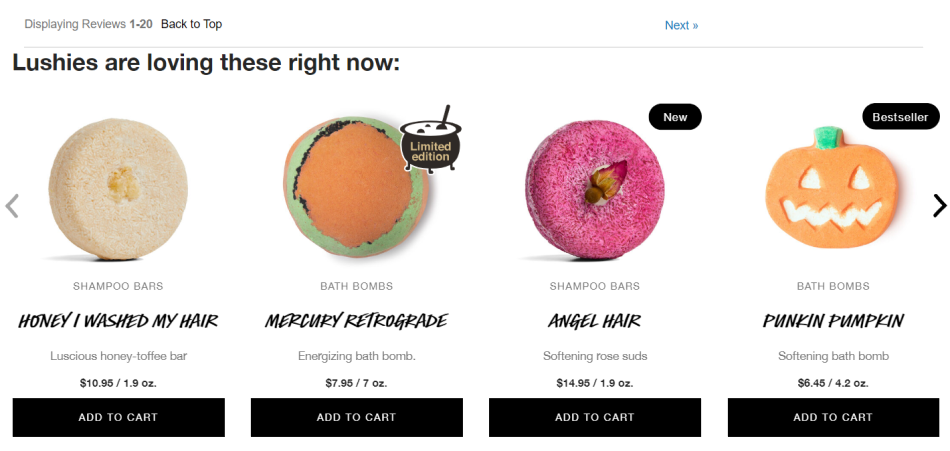
2. Beautified You – Personalized skin regimen
Just like receiving personalized recommendations in a store, Beautified You offers customers a range of options to form a complete skin regimen. They also highlight customer reviews to showcase the satisfaction of previous buyers. It’s all about providing tailored solutions and building trust.
Example: Laroche-posay Product Page
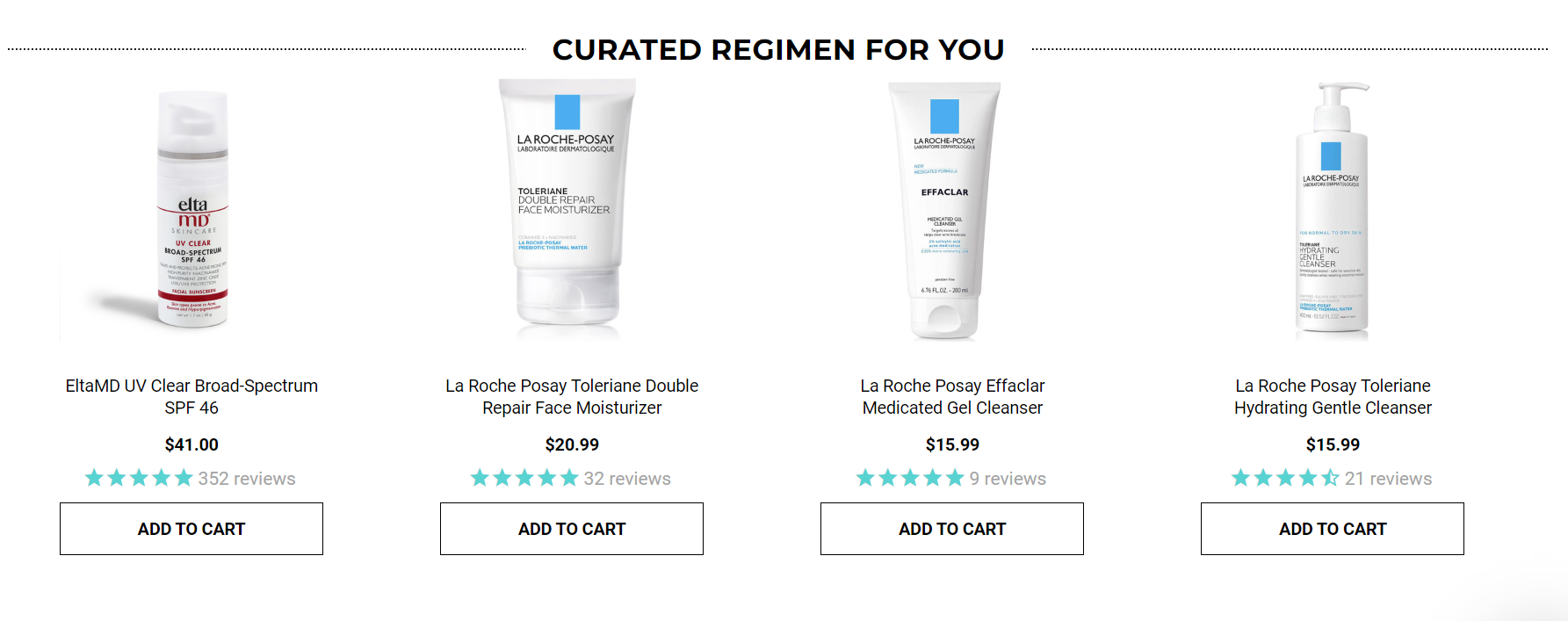
3. ‘Occitane – Save more with a set
To offer value to their customers, L’Occitane showcases the savings that can be made by investing in a product as part of a full routine. By demonstrating the cost-effectiveness of purchasing a set, they encourage customers to complete their skincare or beauty routine with complementary products.
Example: L.A girl product page
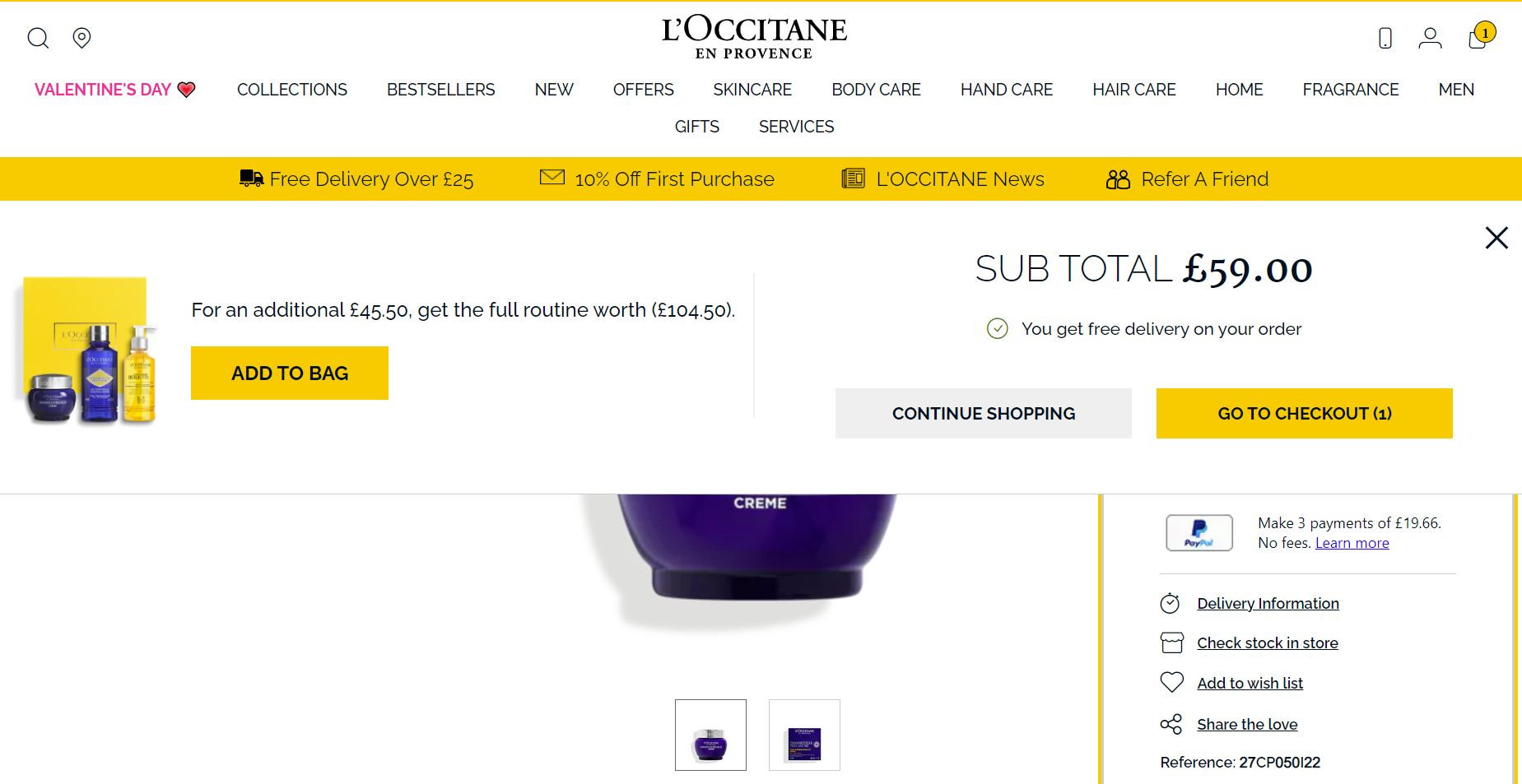
Upsell example
In the beauty industry, brands could employ upselling strategies by encouraging the customer to opt for a larger size or a more luxurious variant of the same product. Here are some techniques to successfully upsell your beauty items:
1. Take advantage of the service process
While customers are enjoying the service, it’s the perfect opportunity to upsell the products being used. For instance, when applying a hair protector before blow-drying, the stylist can casually mention, “This is our best Hair Protectant, and it’s surprisingly affordable too.” This approach allows the customer to consider purchasing the product, avoiding any high-pressure sales tactics at the point of sale.
2. Offer free trials
For instance, a hairstylist could provide a complimentary hair treatment during the salon visit of a particular customer for free. Such gestures are cost-effective yet influential, as they often lead customers to purchase the product once they’ve experienced its benefits themselves.
3. Offer One-Off Discounts
Stylists use professional-grade products that customers may not have at home. To encourage an upsell, the stylist can offer a buy-one-get-one 15% off deal or a similar one-time discount. Everyone loves discounts, and offering clients a subtle discount during product upselling can increase the likelihood of purchase.
Food and Beverage Industry
Cross sell example
If you’re looking to elevate your marketing strategies in the F&B industry, there’s a lot to learn from the experts at McDonald’s. Let’s explore some of their cross sell vs upsell examples that are worth adopting.
1. Get your pricing right
Consider offering cross sell items that are cheaper than the original order and, if possible, provide a discount or a “buy more save more” offer. As a general rule, aim for a cross sell product priced at around half of the original order value.
2. Get your timing right
Don’t display cross sell offers too early in the customer journey. Wait until they have started the checkout process or even after they have completed their purchase. The ideal places to present your cross sell offers include the website’s shopping cart or the post-purchase page. A set of tableware to help customers thoroughly enjoy the meals.
3. Avoid overwhelming your customers
Bombarding customers with multiple offers can be counterproductive. Stick to one relevant offer or product when cross selling or upselling. Keep the process smooth and avoid being pushy.
Upsell example
Upselling in the home decor industry elevates the shopping experience and Along with offering discounts and promotions, upsell is the best way to boost those bills by encouraging customers to choose larger portions or premium ingredients. Let’s us show you how:
1. Upselling main dish
When customers express an interest in trying a dish like fish, the waiters can take the opportunity to present the regular menu. From there, they can skillfully upsell by recommending a higher quality option made with fresher fish, ensuring a more satisfying experience for the customer.
2. Upselling drinks
A regular customer orders their usual apple, ginger, and carrot juice, however, the waiter suggests trying the special house shake instead, emphasizing its energizing properties and larger portion and still appropriate with his/her taste preference. To sweeten the deal, the waiter offers to pack any leftovers in a take-away container. As expected, the customer finds it irresistible.
Sports and Fitness Industry
Cross sell example
Sports’ willingness to spend are evolving rapidly. Whether targeting entry-level sports enthusiasts or highly specialized professional athletes, there are abundant opportunities to increase revenue and optimize the sales process through upselling. Here is the ultimate list of cross sell vs upsell examples for sports products that you should explore:
1. Leverage by roadmap
Clients reaching milestones in their roadmap are more receptive to new goals, better products, and services. By personalizing limited-time offers, such as a 50% discount on premium plans with a 2-day end-timer, you can leverage their achievements to foster trust, loyalty, and future upgrades.
2. Offer small equipment
Expand your cross selling opportunities by offering small equipment items such as protein samples, cycling bidons, shakers, or any other products that are regularly replaced. This strategy works well because customers perceive these purchases as less significant due to their frequent need and lower price point.
3. Provide valuable premium services
Merchants can identify services that provide value to their customers, such as transport insurance in the sports industry, where equipment costs can be significant. Additionally, offering complimentary services to “club members” on your website and cross selling the membership itself can be a successful strategy.
Example: Spalding Product page
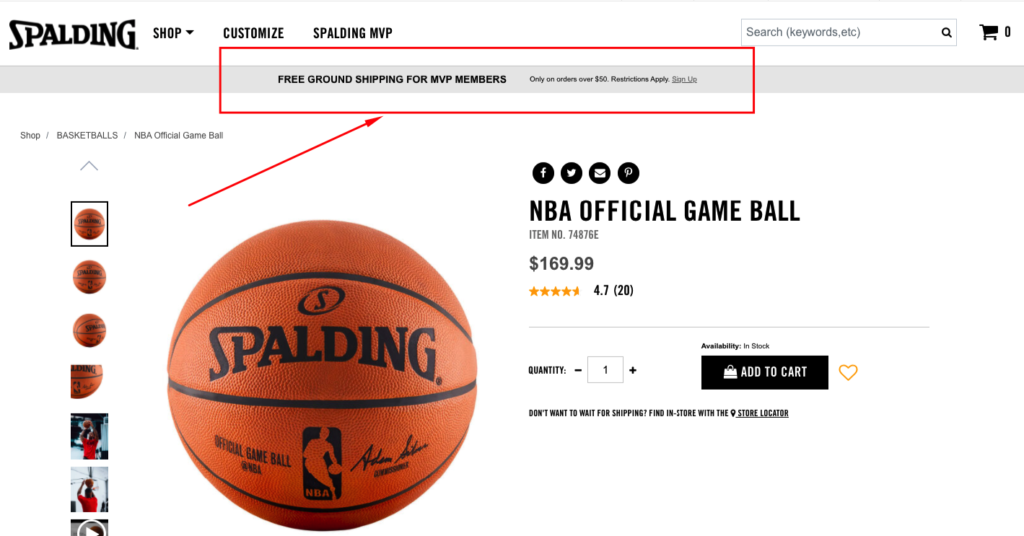
Upsell example
How about upsell strategies? What could we employ to offer advanced or professional-grade equipment but still avoid offense toward customers? Let’s check it out!
1. Encourage product upgrades
Encourage customers to choose product upgrades by using persuasive language that highlights the small performance improvements and aligns with their preferences. This increases the chances of converting them to higher-priced options, maximizing sales potential.
2. Be an expert in a niche group
Beginners, in particular, greatly appreciate receiving guidance without the need for extensive research on the benefits of specific items. By honing in on a specific niche group or sport where you possess extensive expertise, you can effectively guide customers toward purchasing complementary products. So, your AOV is higher and higher, and the workout process of your customer is easier.
Example: L.A girl product page

3. Personalize offers
Enhance the effectiveness of your sales efforts by providing personalized offers to both your sales representatives and clients. Utilize the available customer metrics to carefully select products and services that align with their preferences, such as their preferred exercise, routine, and timing.
In conclusion, the cross sell vs upsell examples across various industry fields in the article demonstrate these strategies’ potential impact and effectiveness. From suggesting matching accessories in the fashion industry to encouraging customers to choose higher-end models in electronics, businesses can leverage cross selling and upselling to enhance the customer experience and drive revenue. Additionally, Shopify provides a robust platform for implementing these strategies, allowing businesses to offer personalized recommendations and enticing offers. By mastering the art of cross selling and upselling, businesses can maximize their sales potential, increase customer satisfaction, and foster long-term loyalty. As businesses navigate the competitive e-commerce landscape, mastering the art of cross selling and upselling is essential for sustained success and growth.



